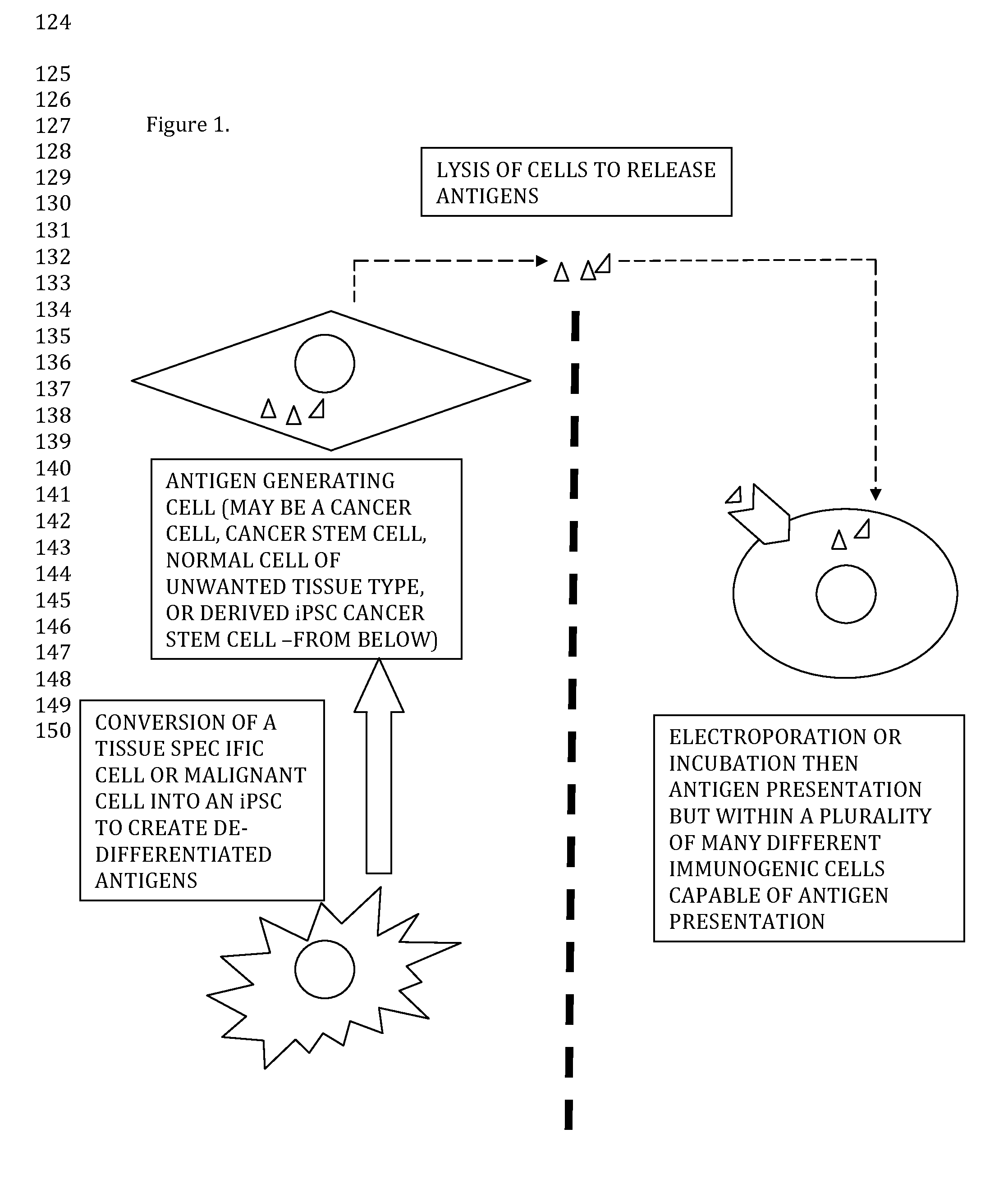Non-conventional Cellular Based Immunotherapy
a technology of cellular based immunotherapy and cellular fusion, which is applied in the direction of enzymology, genital tract cells, antibody medical ingredients, etc., can solve the problems of time-consuming, ineffective, and complex manufacturing steps, and achieve the effect of reducing the number of steps and time-consuming
- Summary
- Abstract
- Description
- Claims
- Application Information
AI Technical Summary
Benefits of technology
Problems solved by technology
Method used
Image
Examples
example 2
Autologous Immunotherapy for Pancreatic Cancer
[0009]A patient with pancreatic cancer received a surgical resection which contained a 2 cm margin of healthy pancreatic tissue. Sterile biopsies from healthy and disease pancreatic tissue was obtained after pathology diagnosis was obtained. Specimens were enzymatically digested to release cells. (Enzyme is deactivated after cells are released.) In the same (or previous or separate) surgical setting liposuctioned fat was obtained from the same patient and SVF was isolated by collagenase digestion or sonication, then resuspended in an appropriate physiologic buffer / media in a sterile container.
[0010]Pancreatic tumor cells were then lysed by sonication or lysis buffer. Tumor whole cell lysate was mixed with SVF cells and electroporation was used to introduce pancreatic tumor antigen into the cells. The electroporated SVF cells were re-introduced into the same patient for immuno-cancer therapy.
[0011]Optionally, iPSCs may be derived from eit...
PUM
| Property | Measurement | Unit |
|---|---|---|
| Immunogenicity | aaaaa | aaaaa |
Abstract
Description
Claims
Application Information
 Login to View More
Login to View More - R&D
- Intellectual Property
- Life Sciences
- Materials
- Tech Scout
- Unparalleled Data Quality
- Higher Quality Content
- 60% Fewer Hallucinations
Browse by: Latest US Patents, China's latest patents, Technical Efficacy Thesaurus, Application Domain, Technology Topic, Popular Technical Reports.
© 2025 PatSnap. All rights reserved.Legal|Privacy policy|Modern Slavery Act Transparency Statement|Sitemap|About US| Contact US: help@patsnap.com

